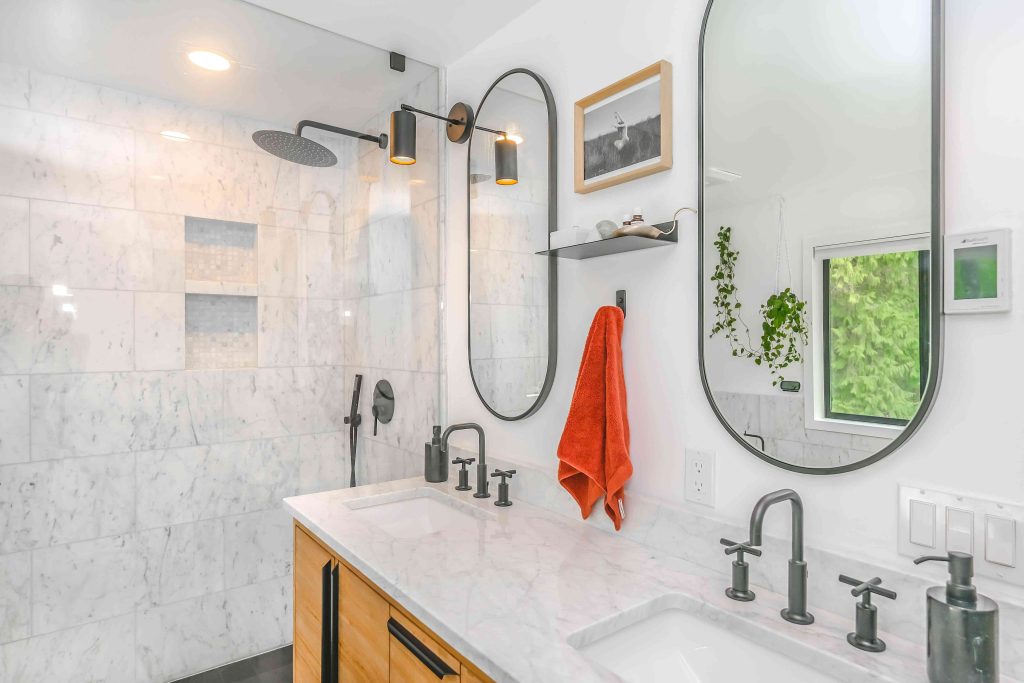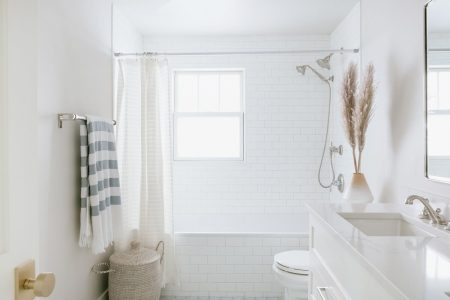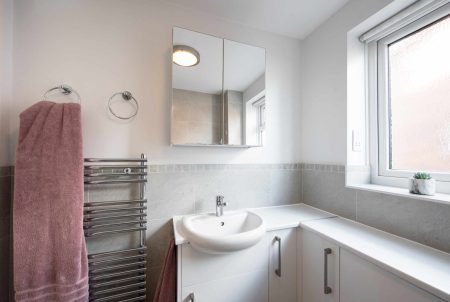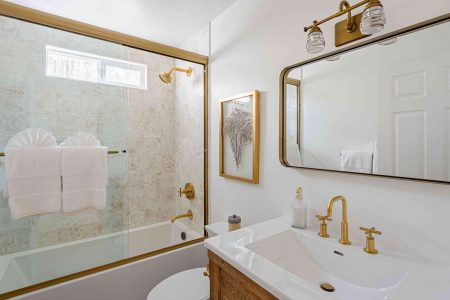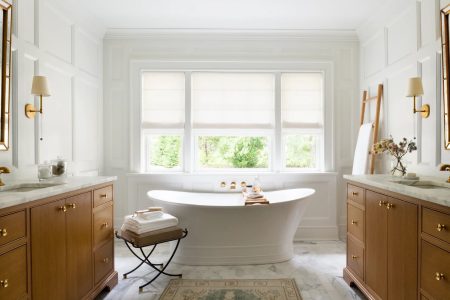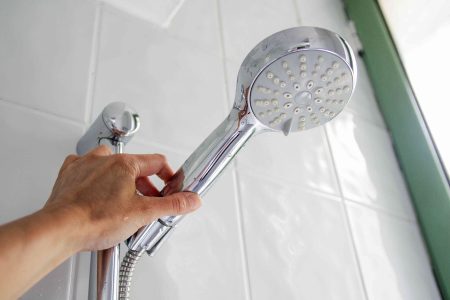Showers tend to be dimly lit spaces. General bathroom lighting is usually adequate for minimal shower needs, but some types of wet-rated shower lights can immensely brighten the shower and let you see exactly what you’re doing: shaving, scrubbing, or soaping up.
Plus, there are a few methods of increasing the intensity of general bathroom lighting to help shine into the shower enclosure.
Qualities of Good Shower Lighting
- Located in Shower: The best type of shower lighting is located within the shower enclosure itself. General room lighting is a good supplement, but it can’t shine on all areas of the shower enclosure.
- On the Ceiling: Most shower lights are located on the ceiling of the shower enclosure. This keeps the light away from most of the water. The ceiling is also easier to tap into for power than the shower surround.
- Wet-Rated Fixtures: Any light fixture in a shower enclosure must be damp- or wet-rated. The National Electrical Code (NEC) 2020 410.10 (D) states that lights located within the shower to a height of eight vertical feet “shall be marked suitable for damp locations or marked suitable for wet locations.”
- Properly Located: Shower enclosures typically are small, so the center of the enclosure is usually the best location. But for larger showers, you may want two or three lights in the enclosure.
Types of Shower Lights
Fixed Wet-Rated Recessed Shower Light
Sealed recessed lights have long been a feature in many showers, providing safe, dependable light to this dark area. The connected units—junction box and light housing—fit up into a hole in the ceiling plenum. A special trim package renders everything watertight.
Wet-rated recessed lights are inexpensive, simple to install, and come in plenty of style and size options. But the units do take up a lot of room in the ceiling plenum, and they aren’t always insulation-contact–rated.
What Is the Plenum?
Plenum is the space above ceiling drywall and below the floor above.
Low-Profile Wet-Rated Recessed Shower Light
Thin, low-profile recessed shower lights, sometimes called can-less shower lights, are newer on the market than the traditional, deep ceiling recessed lights.
Can-less shower lights hug the ceiling at less than 1/4-inch thick. The top portion of the light does extend into the ceiling plenum, but usually at less than 1/2 inch, allowing for insulation contact.
Low-profile wet-rated shower lights make it easy to group several lights in a small ceiling since they have no true housing and the junction boxes sit loosely on top of the ceiling drywall.
But low-profile shower lights are always LED. While LED lights draw less power than halogen or incandescent bulbs, the stark white light isn’t for everyone. Many can-less LED fixtures have adjustable switches that allow you to change the light color to be more similar to incandescent or halogen lights, though.
Gimbal Wet-Rated Recessed Shower Light
A gimbal light swivels 360 degrees and tilts up and down between 0 and 35-40 degrees. In a wet-rated recessed shower light, the bulb is no longer sealed behind a watertight lens. Instead, the entire light unit is waterproof.
Gimbal recessed shower lights give the user the flexibility to turn the light in nearly any direction. You can even turn the light toward the shower wall for a soft, washed-wall glow. They’re especially useful if the shower ceiling happens to be sloped.
Yet gimbal shower lights are up to three times more expensive than fixed lights. And when fully tilted, gimbal units can lose some of their light.
Wet-Rated Ceiling Surface-Mount Shower Light
A recess is usually desired with shower lights due to the low height of most shower ceilings. But some users may want surface-mount shower lights, especially if the ceiling is high enough to afford the extra protrusion.
Surface-mount shower lights illuminate all of the shower instead of just part of it. But choices are few. Styles are limited to plain, white units that are either circle- or square-shaped.
How to Increase Light in a Shower
Instead of installing a light in the shower, another option is to increase the intensity of your bathroom’s general area lighting. Even if you do install a wet-rated shower light, you might still want to improve the quality of the room’s general lighting.
- For shower/tub combinations, install a glass shower enclosure instead of a shower curtain.
- Install frameless glass shower enclosures, which let more light pass through than glass framed shower enclosures.
- You can replace dark shower surrounds with lighter colors.
- Rotate gimbal recessed lights in the main bathroom area toward the shower.
- Paint the bathroom a lighter color.
- Replace the main bathroom area ceiling light dome with a clear dome.
- Or clean the existing dome so that more light passes through.
Read the full article here







